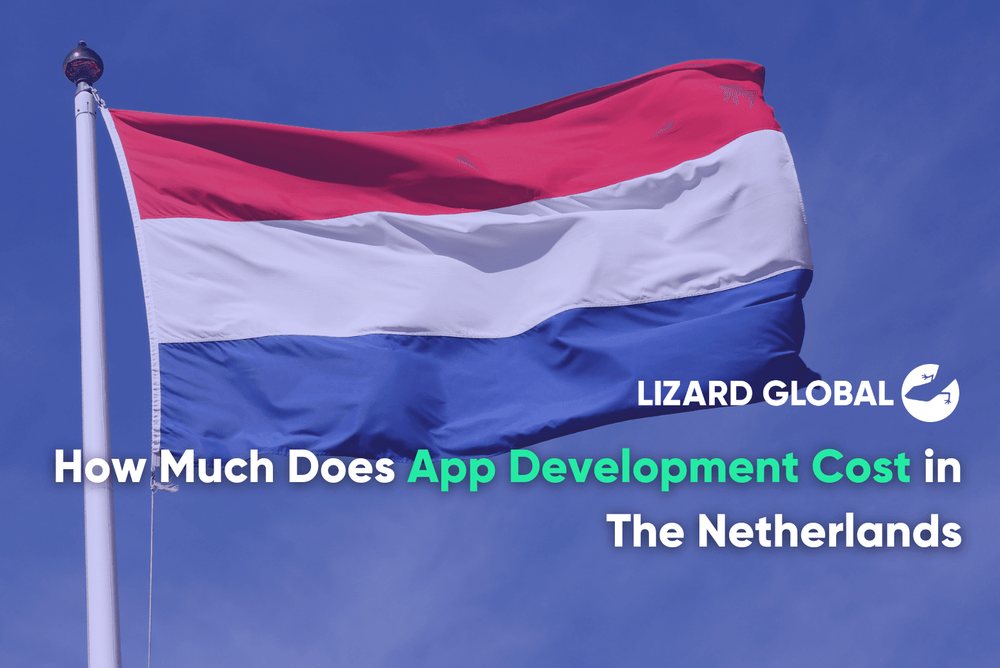The Future of Transportation: Understanding TaaS and MaaS
Get the latest updates about our blog posts.
Subscribe so you don’t miss out!
Key Takeaways
- TaaS and MaaS are transforming transportation by offering scalable, on-demand services that reduce the need for private vehicle ownership.
- Environmental benefits with use of electric and autonomous vehicles, significantly lowering carbon emissions.
- Cost-effective and convenient eliminating the expenses and hassle of vehicle ownership, offering a seamless, pay-as-you-go experience.
- Key features include integration, AI-driven optimization, and personalization to enhance the user experience.
- Software development companies are essential in building the platforms and technologies that make TaaS and MaaS possible.
Transportation is rapidly evolving, thanks to advancements in technology and shifts in consumer behavior. Two concepts leading this transformation are Transportation as a Service (TaaS) and Mobility as a Service (MaaS). These models offer sustainable, efficient, and user-friendly alternatives to traditional transportation methods, aiming to revolutionize how we move people and goods.
In this comprehensive guide, we'll explore what TaaS and MaaS are, their benefits, key features, real-world examples, and how software development companies are essential in making these concepts a reality.
What is TaaS and MaaS?
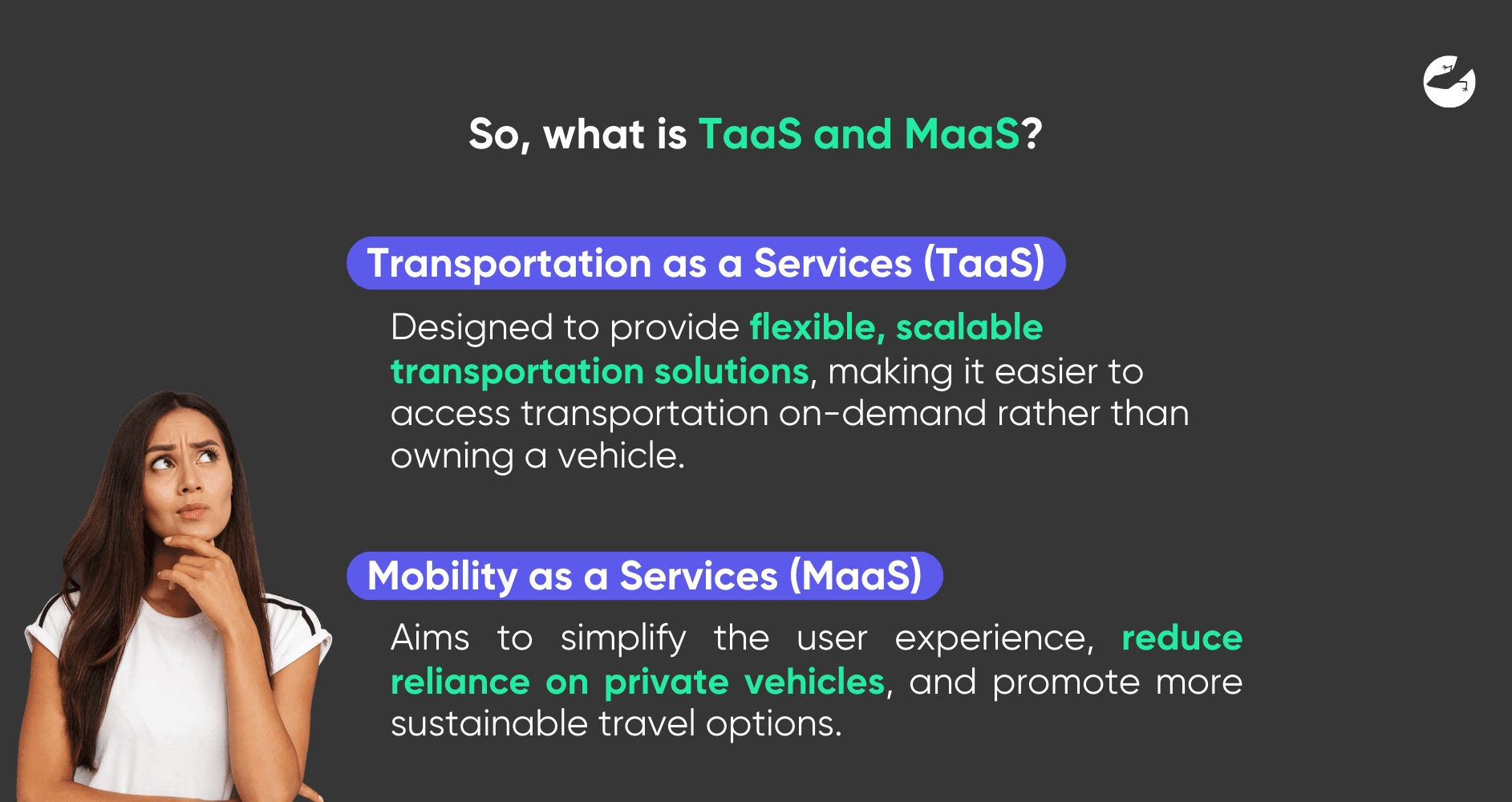
Transportation as a Service (TaaS)
TaaS is a broad concept that includes various forms of transportation offered as a service rather than through ownership. It encompasses ride-sharing, car-sharing, and the emerging use of autonomous vehicles. TaaS is designed to provide flexible, scalable transportation solutions, making it easier for people to access transportation on-demand rather than owning a vehicle.
Mobility as a Service (MaaS)
MaaS is a more user-centric approach, focusing on integrating various modes of transport into a single, cohesive service. It allows users to plan, book, and pay for their journeys across multiple transport options—like buses, trains, ride-sharing, and bikes—through a single platform. MaaS aims to simplify the user experience, reduce reliance on private vehicles, and promote more sustainable travel options.
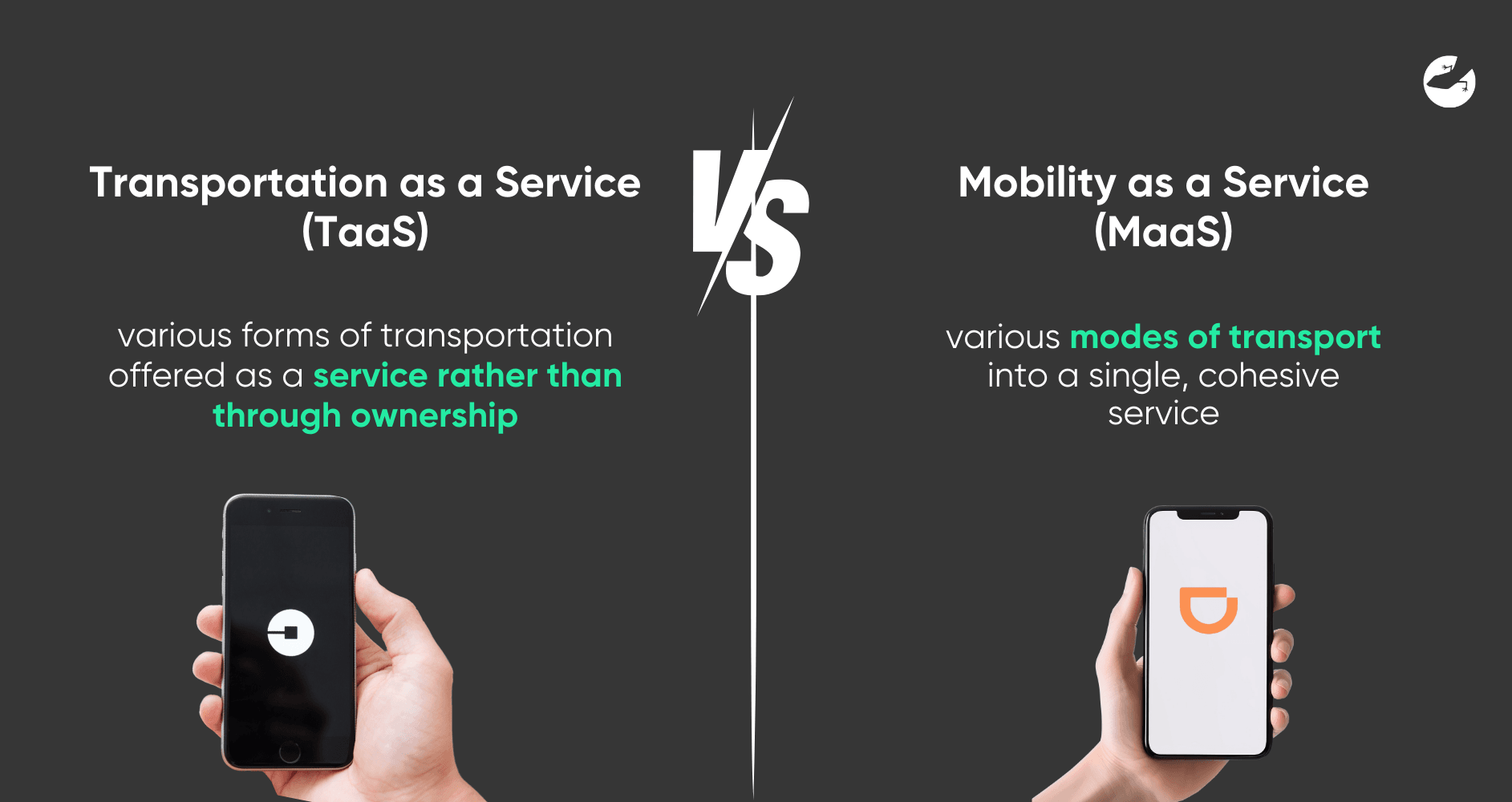
Key Features of TaaS and MaaS
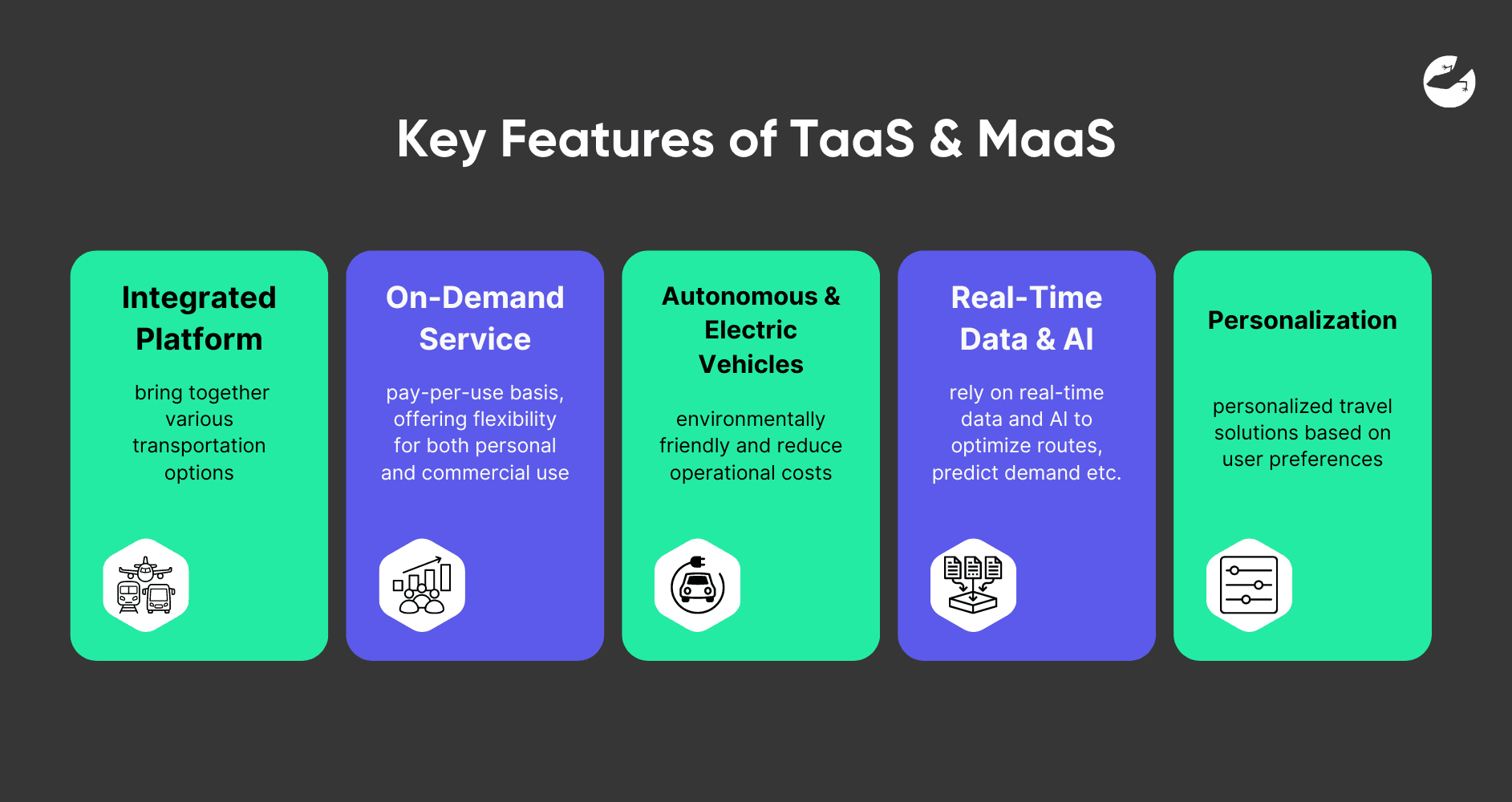
Integrated Platform: MaaS platforms bring together various transportation options—public transit, ride-sharing, bike-sharing—into a single app, making it easy for users to plan and pay for their journeys.
On-Demand Service: TaaS provides transportation services on a pay-per-use basis, offering flexibility for both personal and commercial use. Users can book rides as needed without the commitment of ownership.
- Autonomous and Electric Vehicles: TaaS often involves the use of autonomous and electric vehicles, which are more environmentally friendly and reduce operational costs.
Real-Time Data and AI: Both TaaS and MaaS rely on real-time data and AI to optimize routes, predict demand, and provide users with the most efficient travel options.
Personalization: These services offer personalized travel solutions based on user preferences, schedules, and budgets, enhancing the overall user experience.
Want to find out how much it costs to build your dream app or web app?
Benefits of TaaS and MaaS
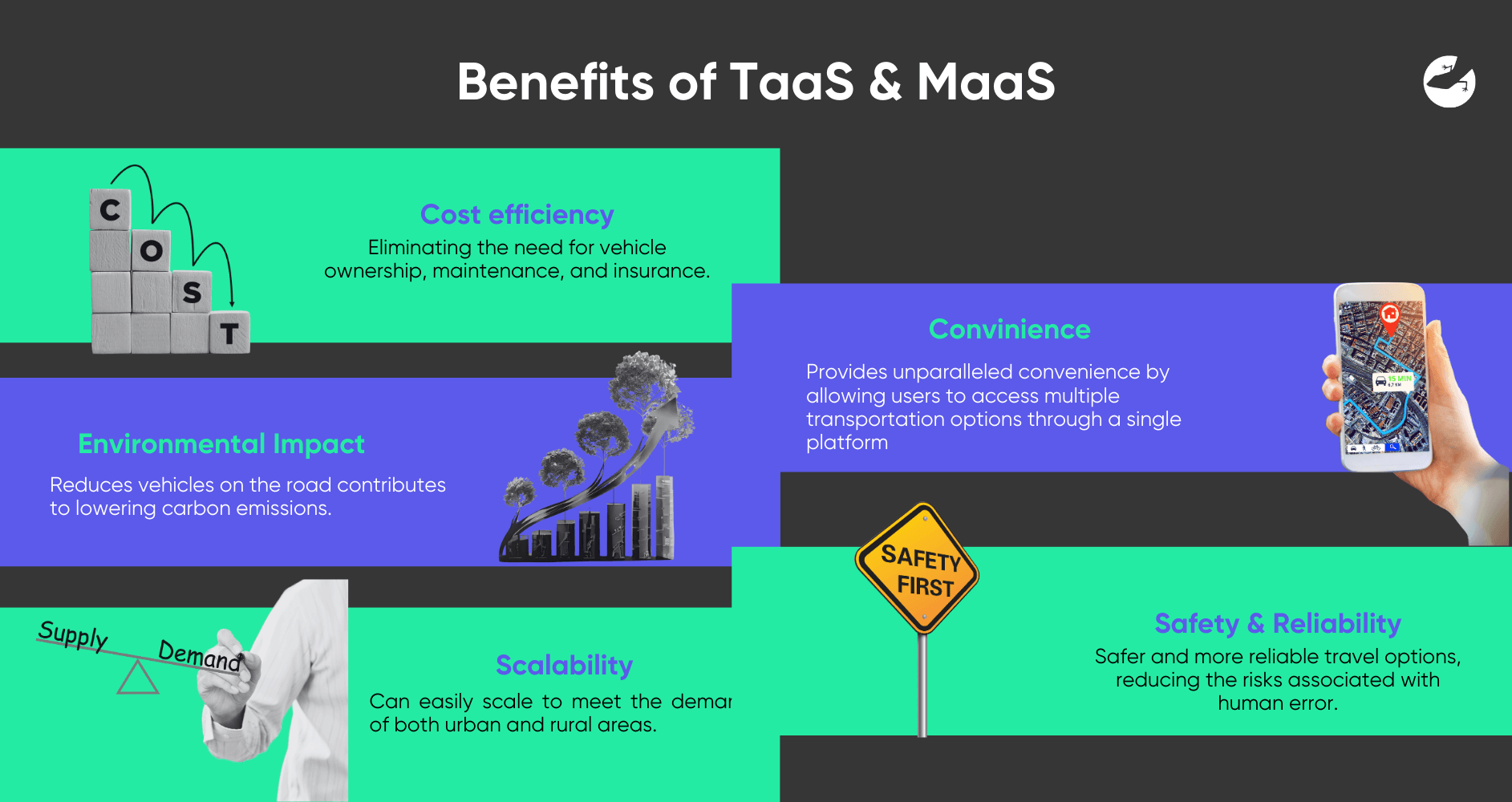
Cost Efficiency: Both TaaS and MaaS offer significant cost savings for users by eliminating the need for vehicle ownership, maintenance, and insurance. Users only pay for the transportation they need when they need it.
Environmental Impact: By reducing the number of vehicles on the road and promoting the use of electric and autonomous vehicles, TaaS and MaaS contribute to lowering carbon emissions and easing traffic congestion.
Convenience: TaaS and MaaS provide unparalleled convenience by allowing users to access multiple transportation options through a single platform. This reduces the hassle of dealing with multiple service providers and payment systems.
Scalability: These services can easily scale to meet the demands of both urban and rural areas, offering tailored solutions that address specific transportation challenges.
Safety and Reliability: With advancements in autonomous vehicles and smart transportation systems, TaaS and MaaS offer safer and more reliable travel options, reducing the risks associated with human error.
TaaS and MaaS Examples and Case Studies
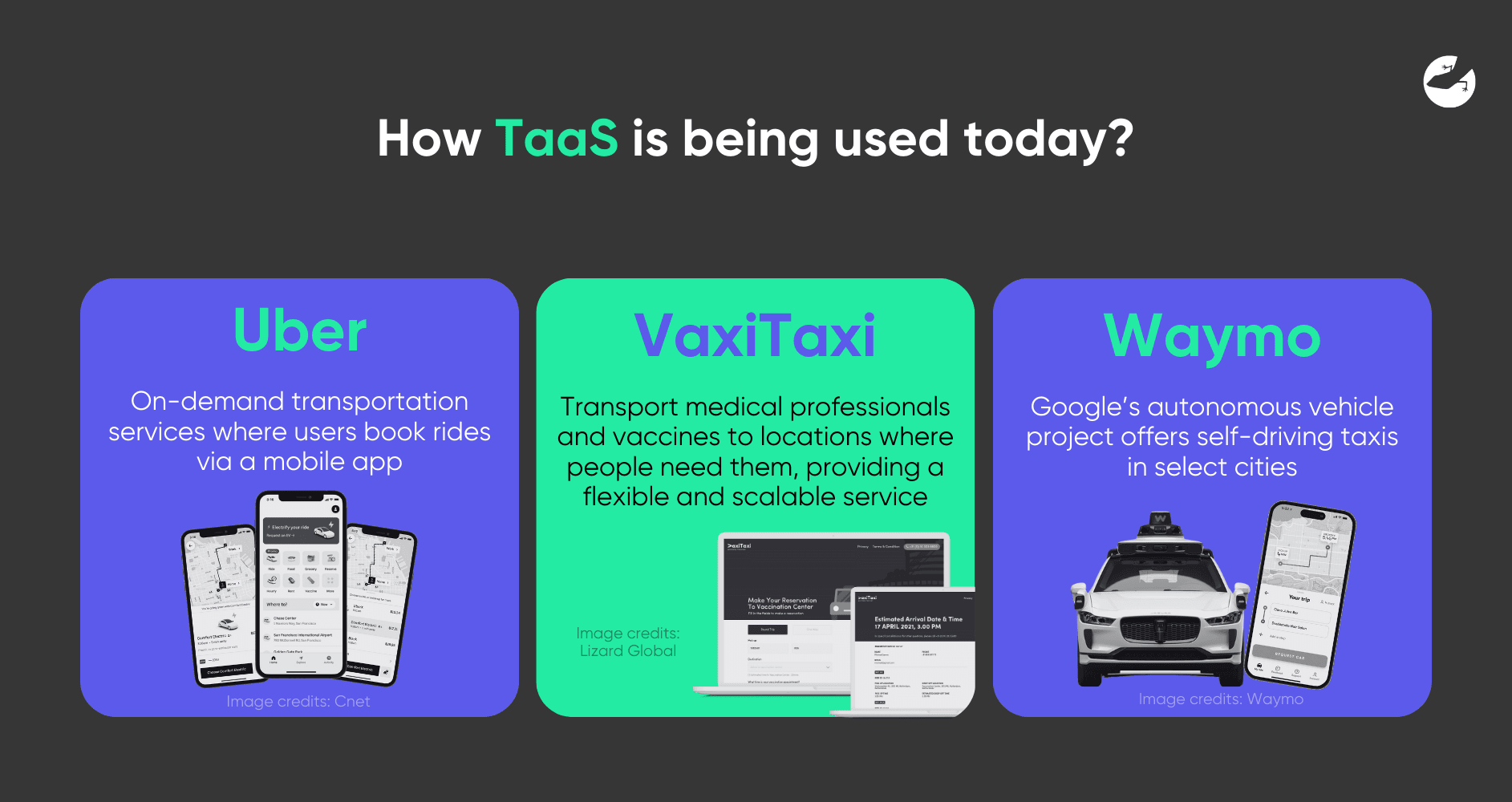
Uber: These ride-sharing giants are prime examples of TaaS in action. They offer on-demand transportation services, allowing users to book rides via a mobile app, making car ownership less necessary in urban areas.
VaxiTaxi: VaxiTaxi is a specialized transportation service that provides mobile vaccination services. that focus on general transportation needs (like ride-sharing or autonomous vehicles), VaxiTaxi is focused on a specific public health need—vaccination. This specialization makes it a unique, narrower example of TaaS.
Waymo: Google’s autonomous vehicle project, Waymo, represents the future of TaaS. By offering self-driving taxis in select cities, Waymo is pushing the boundaries of what TaaS can achieve in terms of safety and efficiency.
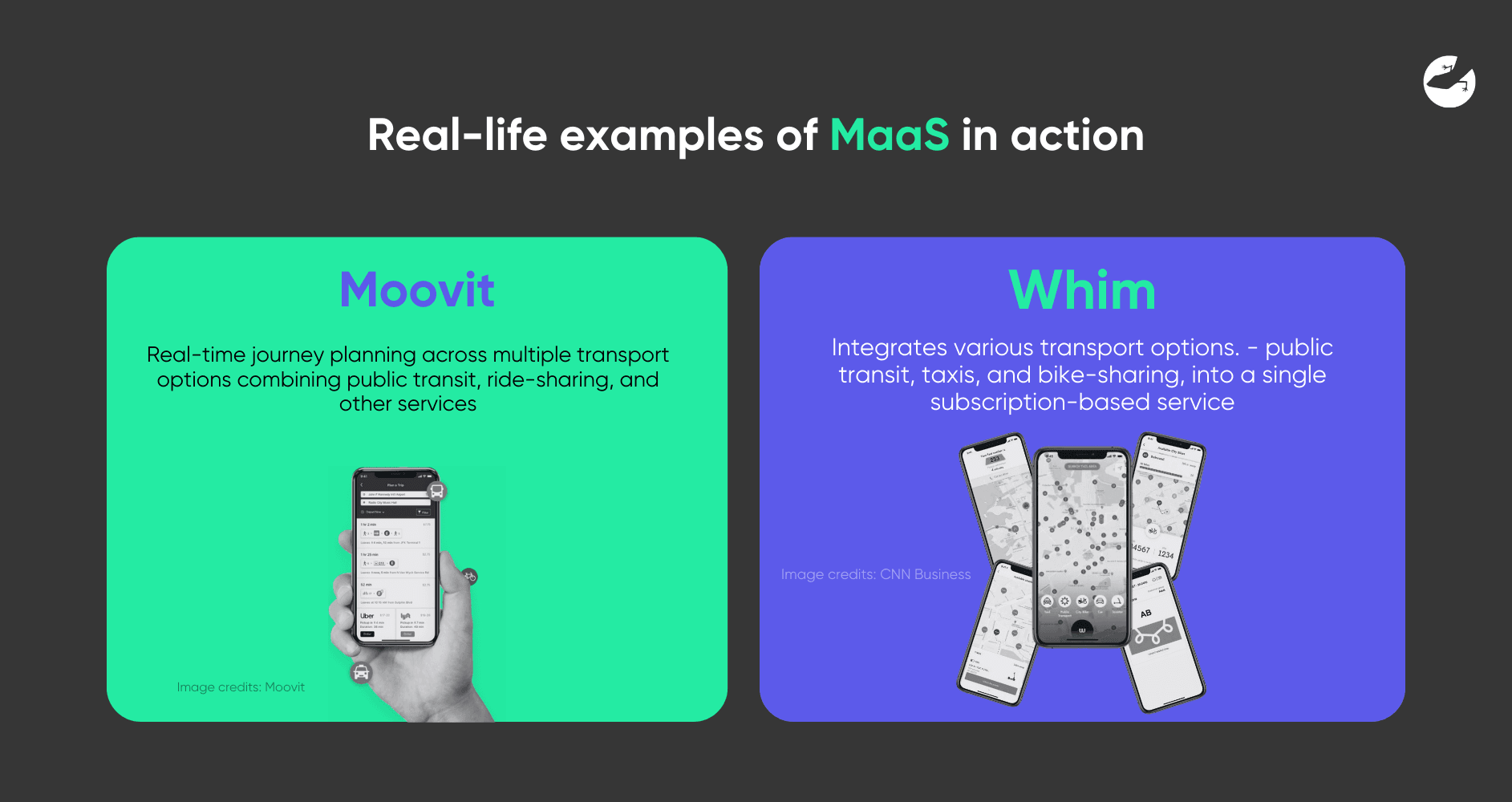
Moovit: Acquired by Intel, Moovit is a MaaS platform that offers real-time journey planning across multiple transport options. It combines public transit, ride-sharing, and other services to provide users with the most efficient routes.
Whim: A leading example of MaaS, Whim integrates various transport options, including public transit, taxis, and bike-sharing, into a single subscription-based service. It allows users in cities like Helsinki to plan and pay for all their transportation needs through one app.
The Role of Lizard Global in TaaS and MaaS
Software development companies like us play a crucial role in the implementation and success of TaaS and MaaS. We are responsible for creating the platforms and applications that power these services, ensuring they are user-friendly, reliable, and scalable. Here’s how:
Platform Development: Building robust, scalable platforms that can integrate multiple transportation services is key. Lizard Global works on creating seamless user interfaces, backend systems, and APIs that connect different transport modes.
Data Integration and Management: TaaS and MaaS rely heavily on real-time data. Lizard Global develops systems to collect, analyze, and use this data to optimize routes, predict demand, and offer personalized services.

Security and Compliance: Ensuring that these platforms are secure and comply with local regulations is critical. Lizard Global focuses on building secure systems that protect user data and adhere to transportation laws.
AI and Machine Learning: These technologies are central to optimizing transportation services. Lizard Global creates algorithms that power autonomous vehicles, predict traffic patterns, and enhance the overall efficiency of TaaS and MaaS platforms.
User Experience (UX) Design: Creating an intuitive, easy-to-use interface is vital for user adoption. Lizard Global designs the UX/UI of these platforms to ensure a smooth, hassle-free experience for users.



